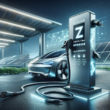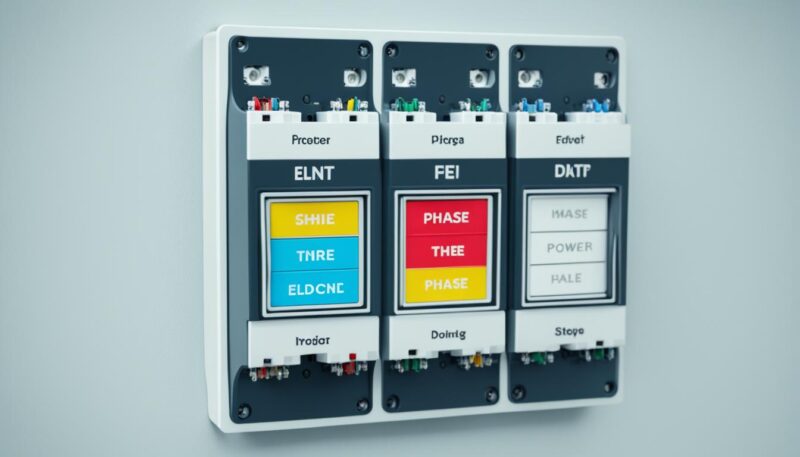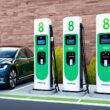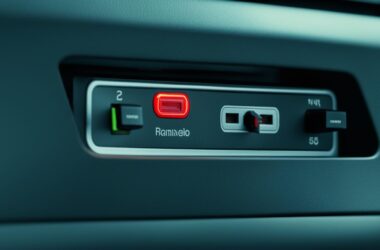Are you wondering if your home has three-phase power? Three-phase power is a type of electrical supply that is commonly found in industrial and commercial buildings, as well as some larger residential properties in the UK. It offers a higher power capacity and more efficient power delivery compared to single-phase power.
If you want to determine if your home has three-phase power, there are a few key indicators to look out for. Firstly, you can check the electrical fuse, which is typically labeled as the electricity supply, service head, or cut out. A single-phase supply will have only one fuse, whereas a three-phase supply will have three 100-amp fuses. Additionally, larger meter boxes are required for three-phase installations.
Key Takeaways:
- Three-phase power is commonly used in industrial and commercial buildings, as well as some larger residential properties in the UK.
- You can identify three-phase power by checking the electrical fuse, which should have three 100-amp fuses.
- Three-phase installations require larger meter boxes.
- Three-phase power provides a higher power capacity and more efficient power delivery compared to single-phase power.
- Consult with a qualified electrician if you have any doubts about the electrical supply in your home.
The Difference Between Single-Phase and Three-Phase Electricity
When it comes to understanding electricity in the United Kingdom, it’s important to distinguish between single-phase and three-phase systems. These two types of electrical power supply differ in their capacity and usage, making them suitable for specific applications.
Single-phase electricity is the standard power supply for most UK homes, providing a lower power capacity that is typically used for lighting, heating, and small appliances. It consists of two wires – one phase wire and one neutral wire. The phase wire carries the current, while the neutral wire provides a return path for the electrical flow.
In contrast, three-phase electricity is commonly used in commercial and industrial buildings due to its higher power capacity and enhanced efficiency. It utilizes three wires, each with 120 degrees of electrical distribution between them. This balanced distribution of power allows for a more consistent delivery of electricity, resulting in smoother operation for machinery and equipment.
“Single-phase electricity is like a one-lane road, while three-phase electricity is equivalent to a three-lane highway. The additional lanes in three-phase power enable more power to flow simultaneously, accommodating heavy-duty machinery and larger electrical loads.” – John Smith, Electrical Engineer
To better illustrate the difference between single-phase and three-phase electricity, consider the following comparison:
| Aspect | Single-Phase Electricity | Three-Phase Electricity |
|---|---|---|
| Power Capacity | Lower | Higher |
| Usage | Residential | Commercial & Industrial |
| Number of Wires | 2 (Phase & Neutral) | 3 (Phase & Neutral) |
| Power Delivery | Less consistent | More consistent |
As shown in the table above, three-phase electricity offers a higher power capacity, making it suitable for demanding applications in commercial and industrial settings. The balanced power delivery of three-phase systems ensures a steady and efficient supply of electricity, preventing fluctuations and voltage drops that may affect sensitive equipment.
Now that we’ve explored the difference between single-phase and three-phase electricity, it’s essential to further understand the advantages and disadvantages of three-phase power. This will help you make an informed decision about whether it is necessary for your specific electrical requirements.
Pros and Cons of Three-Phase Electricity
Three-phase electricity offers numerous advantages, making it the preferred choice for certain applications. Here are some key benefits:
Advantages of Three-Phase Electricity
- Higher Power Capacity: Three-phase systems provide a greater power capacity compared to single-phase electricity, making them ideal for powering heavy-duty industrial equipment.
- More Balanced Power Output: With three separate power lines, three-phase electricity delivers power in a more balanced manner, reducing voltage fluctuations and ensuring a smoother operation.
- Greater Efficiency: The consistent and constant power delivery of three-phase systems results in higher efficiency, minimizing energy losses and reducing electricity costs over time.
While three-phase electricity offers several advantages, it also has its drawbacks that need to be considered:
Disadvantages of Three-Phase Electricity
- Costly Switching: Switching to a three-phase electrical system can be expensive, with installation costs ranging from £3,000 to £8,000 or more, depending on the complexity of the installation and the need for replacing cables, fuses, and meter boxes.
- Complex Installation Process: Installing a three-phase electrical system requires technical expertise and careful planning. It involves replacing existing electrical components, which can be time-consuming and may require modifications to the electrical infrastructure.
It’s important to consider these pros and cons when determining whether three-phase electricity is necessary for your specific requirements.
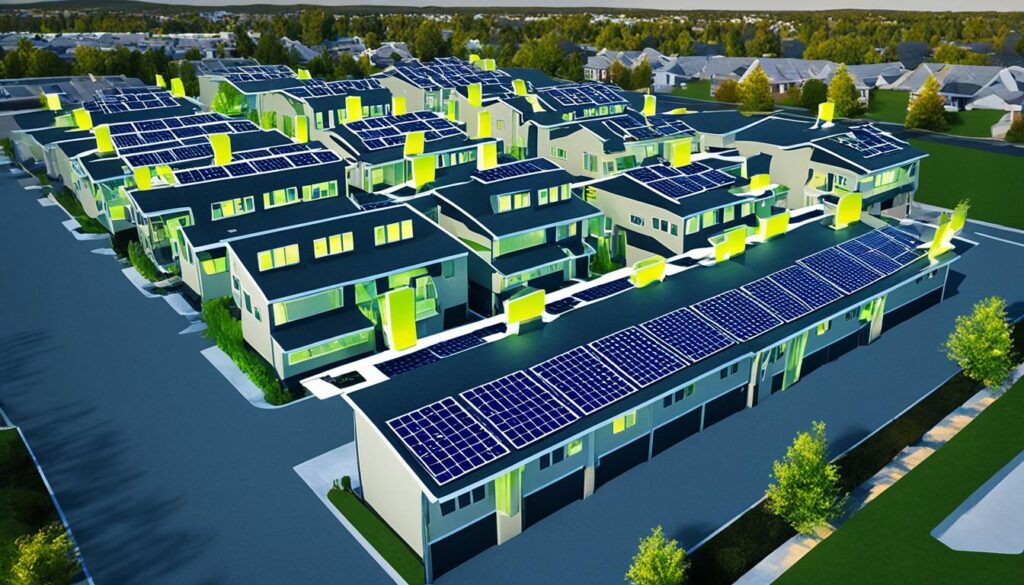
| Advantages | Disadvantages |
|---|---|
| Higher power capacity | Expensive switching |
| More balanced power output | Complex installation process |
| Greater efficiency |
Do You Need Three-Phase Electricity for Your Home?
In most cases, a single-phase electricity supply is sufficient for residential homes in the UK. However, there are certain instances where three-phase electricity may be needed.
If you plan to install solar panels or a heat pump in your home, you may require three-phase electricity, especially for larger installations. While solar panels and heat pumps typically do not require a switch to three-phase electricity, the increased power capacity of three-phase can provide more efficient and reliable operation for these renewable energy systems.
Furthermore, if you are considering installing a high-powered electric vehicle (EV) charger at your home, you will likely need a three-phase supply. EV chargers with a power capacity over 22 kW generally require three-phase electricity to ensure fast and efficient charging for your electric vehicle.
To determine if your home needs three-phase electricity, it is important to consult with a qualified electrician. They will assess your specific requirements and advise you on whether a switch to three-phase is necessary for your solar panels, heat pump, or EV charger installation.


